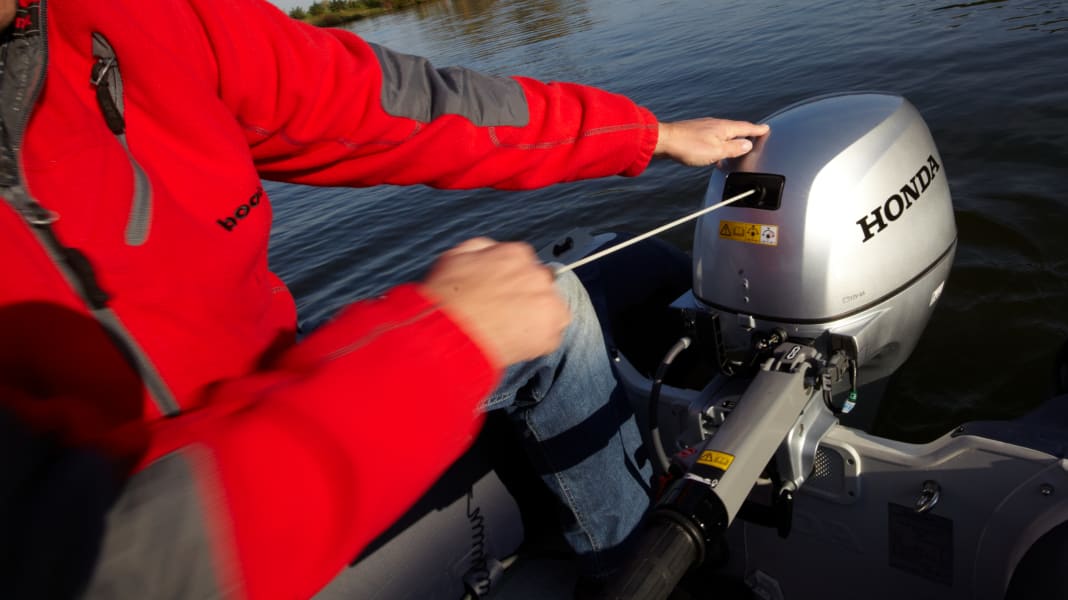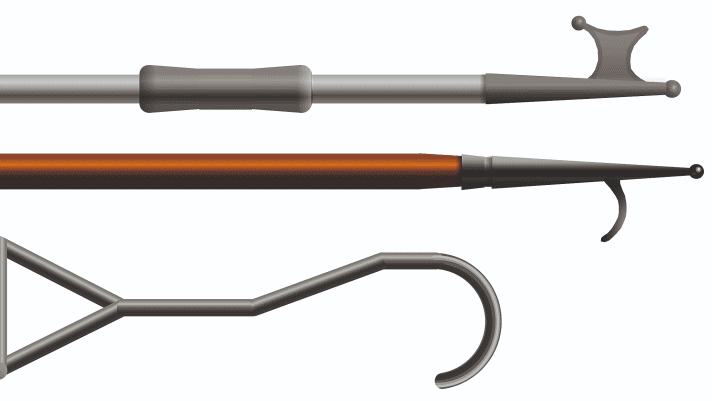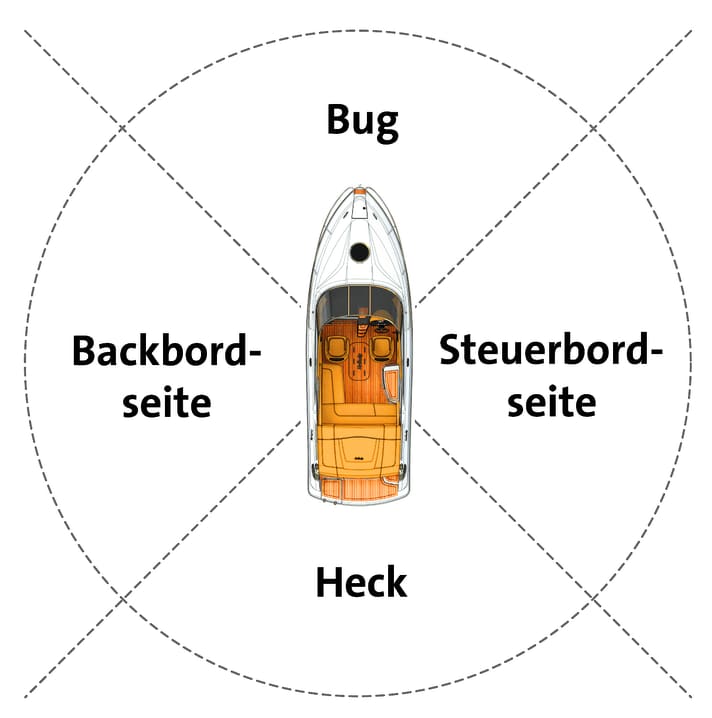
A
Aft The rear end of the boat (see also stern).
Anchor Metal piece of equipment used to hold a boat in place. Buries itself in the ground (bottom) and thus holds.
Anchor ball Black ball to indicate anchoring.

Anchor light All-round light to indicate anchoring at night.
Edging Drive onto the beach with the bow of the boat.
Antifouling A coating in the underwater area of the boat against fouling and mussels.
Anti-slip structure Floor structures to prevent slipping.
Stop Braking the boat with the gearbox engaged in reverse.
B
Port The left side of the boat, seen in the direction of travel.
Swimming ladder Hangs outboard and makes it easy to get out of the water.
Bathing platform A low-lying platform at the stern ensures safe and easy bathing fun.
Vouchers Attaching a line to a cleat or bollard.
Boat hook A stick with a hook at the end.

Bug The front end of the boat.
c
Convertible top High canopy made of fabric (cloth) over the cockpit area.
Centre console Completely open boat with console in the centre.
Cockpit Also known as the cockpit, this is the open seating area aft in the boat.
D
Daycruiser Also known as a cuddy cabin, this is a sports boat with a slip cabin in the bow for overnight accommodation.
E
Echo sounder Electronic depth gauge.
F
Fairway Fairway with deep water, marked with navigation marks for shipping.
Remote control Box with levers for operating the gears and throttle.
Flagpole A wooden or metal pole at the stern, for example, to place the so-called "Nationale" (for us the German flag).
G
GRP Abbreviation for glass fibre reinforced plastic.
Glider A boat that is lifted far out of the water with the help of dynamic buoyancy and glides on it.

H
Semi-glider A mixture of displacer and glider, usually a displacer with a flat, wide stern and powerful engine. Dynamic buoyancy forces lift the boat slightly out of the water.
Handrail Long handles, usually made of tube.
Tail The rear end of the boat.
Tail shaft Waves behind the boat.
Manual bilge pump Hand-operated bilge pump that no boat should be without.
Tail The rear end of the boat.
Tail shaft Waves behind the boat.
K
Cables reduction A steering system that transmits the steering force from the steering wheel to the outboard motor via a mechanical cable.
Cabin boat A boat on which you can sleep and cook. Usually also with toilet and shower facilities.
Chain lead A chain that is attached between the anchor and the line. Advantage: The anchor digs in better due to its weight.
Cleat Double T-shaped fitting to which the boat is moored.
Compass Indicates compass direction and course.
L
Leash Rope for mooring the boat, usually made of plastic.
Lenzen Pumping or scooping water out of the boat.
Log Speed measuring device.
M
Man overboard manoeuvre A manoeuvre to pick up a person who has gone overboard.
P
Bollard Type of cleat that is particularly stable.
Position lanterns Lighting on the boat so that you can be seen at night and in unsafe weather. There are special regulations for these lights.
R
Railing Tubular frame for mooring, which runs alongside the side deck up to the bow.
Strap Similar to oars, but firmly attached to the boat.
S
Sound signals Signals given by horn, whistle or bell to indicate manoeuvres or the condition of the boat.
Scuff plate A solid moulding or rope on the outside of the boat to protect it from damage in the event of a bump.
Sea chart A kind of map with the nautical information of the area.
Side deck Longitudinally accessible lateral surface.
Mirror Rear wall to which the outboard motor is screwed
Starboard The right side of the boat, seen in the direction of travel.
T
tonnes Floating navigation marks fixed to the bottom, for example in the fairway.
U
Shoal Shallow or shallow place in a body of water.
V
Displacer Can only travel slowly due to its weight, hull shape and engine power.
Foredeck The walk-in area in the bow.
Z
Drawbar eyes Round openings for attaching ropes or tension belts.

